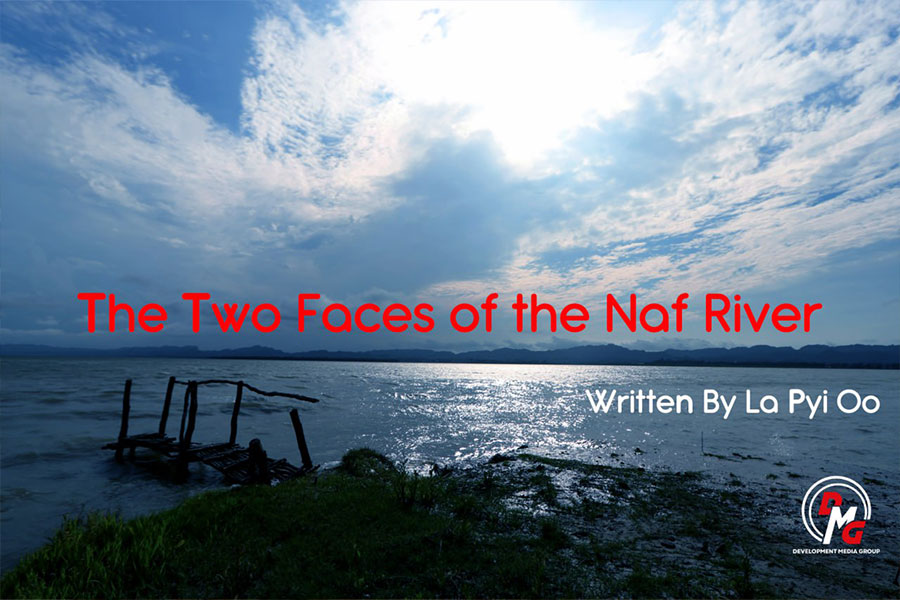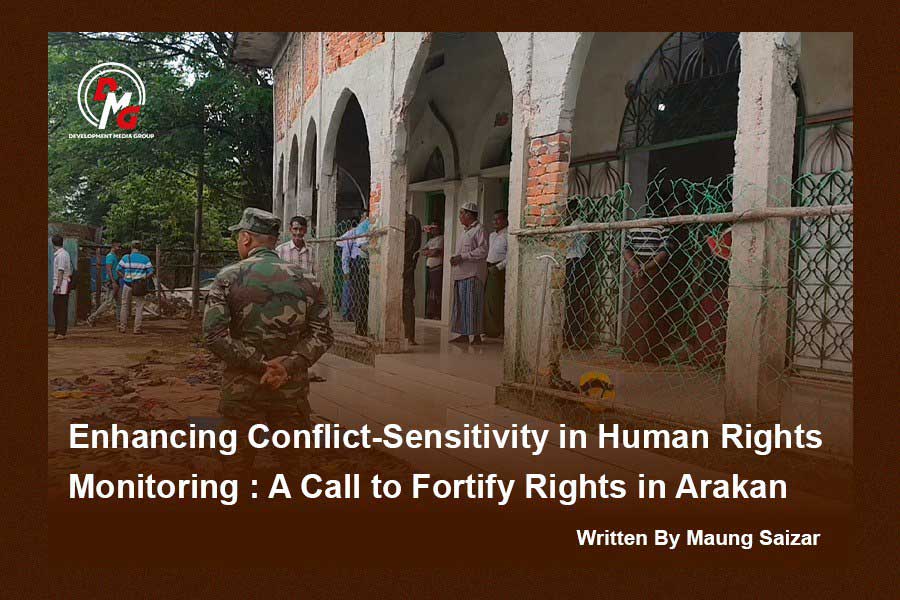- Junta unable to hold elections in dozens of wards and village-tracts in Sittwe, Kyaukphyu
- Fighting escalates between Myanmar military, Arakan Army in Ayeyarwady Region
- Regime steps up civilian arrests in Sittwe
- ULA safeguards Mrauk-U's ancient heritage
- Arakan on the Edge: What the DMG Landmine Impact Report Reveals About Myanmar's Deepening Humanitarian Crisis
Mangroves Besieged, Livelihoods at Stake in Arakan State
“Business owners had mangrove trees removed to build fish and prawn farms. So, we have lost our fishing spots,” said Daw Thein Win Yi, from Linpankya Village.
14 Sep 2023
.jpg)
Written by Myat Swe
Ko Myo Maung was planting “bombs” in places where he thought the targets would cross. Those bombs were not planted on land, but under water.
Those bombs are not explosives, but crab traps made of bamboo. Crab traps are called “crab bombs” in Arakan State.
Ko Myo Maung was planting crab traps in Kyaung Myaung village-tract in Ann Township, the site of a vast mangrove forest. For decades, the 34-year-old has made a living catching crabs there.
The native of Linpankya village in Ann Township started catching crabs together with his father when he was 12. Mangrove forests provided a source of livelihood for him.
“Mangrove forests are part of our lives,” said Ko Myo Maung.
The catch has, however, significantly declined. Previously, two to four crabs were caught on average in a crab trap. But now, if he uses 60 crab traps, 40 of them catch none, said Ko Myo Maung.
Like Ko Myo Maung, the majority of locals make a living by catching crab and fish, and their livelihoods are heavily dependent on mangrove forests. But mangrove forests have been diminishing, and local residents are concerned that they would lose their livelihoods along with the mangrove trees.
There are 66,890 acres of mangrove forests in Ann Township, and about half of them are systematically conserved and protected by locals.
Root Causes
Excessive logging is depleting mangrove forests, the lifeblood of the local population. People from different townships come and cut mangrove trees in Ann Township for firewood and charcoal, according to locals.
“We local people conserve more than 30,000 acres of mangrove forests, which we are losing to logging,” said Ko Myo Maung.
Individual businessmen also cut mangrove trees to make way for prawn and fish farms, affecting the livelihoods of locals. Locals are also barred from fishing in those areas.
“Business owners had mangrove trees removed to build fish and prawn farms. So, we have lost our fishing spots,” said Daw Thein Win Yi, from Linpankya Village.
Like their male counterparts, women in Kyaukmyaung village-tract also make a living by catching crabs, using crab traps. Daw Thein Win Yi, 35, has worked as a crabber for the past decade to support her two children. Her elder son is currently in Grade 12, and her daughter is in Grade 7.
“The mangrove forests are the main source of livelihoods,” said Daw Thein Win Yi.
Fish stocks have declined due to deforestation of mangrove forests, said fisherman U Kyaw Hla Tun, whose livelihood is also dependent on mangrove swamps.
“It has become increasingly difficult to make a living by fishing. I don’t know what to do,” he said.
A Theoretically Protected Space
The Wunbaik reserve mangrove forest (WRMF), Asia’s second-largest mangrove forest, covers more than 150,000 acres and is located in Arakan State’s Ramree and Kyaukphyu townships. The WRMF is about 56,633 hectares and is a habitat rich in biodiversity. A committee consisting of 26 mangrove conservationists and local people was formed on September 29, 2021, to prevent illegal logging and charcoal harvesting from the WRMF.
“There are about 40 boats that come and cut firewood at Wunbaik reserve mangrove forest daily,” said U Oo Soe Tha, an environmentalist in Ramree Township.
The Wunbaik mangrove protection committee arrests and fines those caught cutting down the mangroves illegally.
“The Wunbaik mangrove protection committee members arrested many people who illegally cut down firewood,” U Oo Soe Tha said. “When we catch those who steal firewood, if the relevant governments deal with it according to the law, will we be able to successfully preserve the Wunbaik reserve mangrove forest?”
The Wunbaik mangrove protection committee has no funds to patrol the mangroves, so the group is currently on temporary hold. Locals hope that if the Wunbaik reserve mangrove forest can be properly protected and maintained, fish resources will bounce back in townships such as Kyaukphyu, Ramree, Ann and Myebon.
The Wunbaik reserve mangrove forest is currently being degraded due to the lack of protection committee staff and the government’s failure to protect the mangroves, the residents have concluded.
“Large trees are now completely rare and only small trees remain in Wunbaik reserve mangrove forest,” U Oo Soe Tha said.
Fish and shrimp, which provide much of the protein that coastal populations consume, spawn in the mangrove shallows. Crab, snail and clam are also aquatic products obtained from mangrove forests.
Mangrove conservationists say Cyclone Mocha, which made landfall with destructive force in Arakan State on May 14, caused damage to mangroves.
“Mangroves have been affected by human logging since the beginning, and are further damaged by storms. In order for the mangroves to survive, it is necessary to protect and preserve them more than ever,” said U Ran Naung Soe, chairman of the Arakan Biodiversity and Environmental Conservation Association.
How Best to Preserve and Protect?
In order to reduce the degradation of mangroves, villages with mangroves have been identified and grouped according to area, and the villages with mangroves have been provided with awareness activities and sentinel inspections in the mangroves, according to the Arakan State Forestry Department.
“For the development of mangrove areas, the acreage of mangroves is decreasing due to fish farming ponds, shrimp breeding ponds and agricultural land,” said an official from the Arakan State Forest Department.
He continued that not only the departments but also the public should participate in the conservation of mangroves.
“I want to take effective action against those who cut mangroves. If the government does not take action against those who cut down mangroves, I want other organizations to enact laws and take action,” said U Kyaw Hla Tun, a local man from Kyaukmyaung Village in Ann Township.
The United League of Arakan (ULA) has said that a new forest law is being drafted in Arakan State. The Arakan Army said that there is a need for limited exploitation of timber extraction and that it will carry out educational activities for replacement and replanting in areas where trees are scarce.
“If mangroves are to be preserved, it is necessary to form mangrove protection groups in the villages, and maintain them. It is necessary to do it systematically and strictly. The damaged mangroves need to be replaced by plantations, and if this is to be done, a government needs to be involved,” said Ko Myo Lwin, an environmentalist in Ann Township.
“Mangroves also benefit human livelihoods,” said Ko Myo Maung, one such beneficiary. “In addition, it is beneficial to natural disasters, so I would like to appeal to the entire land to protect and preserve these precious mangroves.”




















